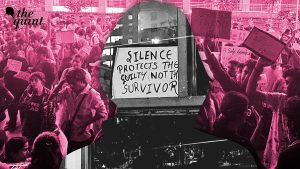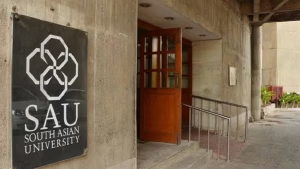SAU Sexual Assault Case: Warden Removed, Assistant Suspended Following Student Demands
In a swift response to mounting student protests, South Asian University (SAU) has removed the girls’ hostel warden and suspended an assistant after a female student accused multiple individuals of sexual assault on campus. The administrative actions come amid widespread calls for accountability and better safety measures from the university community. The incident has not only raised serious concerns about campus security but also spotlighted the responsibility of institutions to create a safe environment for students.
Allegations and Initial Response
The case revolves around an allegation made by a female student, who claimed she was sexually assaulted within university premises by four men, including a campus security personnel. The incident reportedly took place near the auditorium area, a part of the campus under ongoing construction. Following the allegation, the student filed a First Information Report (FIR) with local police authorities, prompting an official investigation into the matter.
Students at SAU were quick to respond to the news of the assault. Concerned about both the safety of their peers and the alleged delay in the administration’s handling of the incident, they organized protests demanding immediate action. Among the students’ demands were the suspension of the hostel warden and the assistant, as well as the inclusion of student representatives in the internal investigative committee.
Administrative Actions Taken
In response to the protests and growing concerns from the campus community, SAU took decisive administrative measures. The girls’ hostel warden was removed from her post, and the assistant was suspended pending further investigation. The university administration issued a statement emphasizing its commitment to student safety and assured full cooperation with the ongoing police investigation.
The actions were seen as a direct response to student pressure and were aimed at restoring confidence in the university’s ability to handle such sensitive issues. Officials have also indicated that internal reviews are underway to assess campus security protocols and to identify gaps that may have contributed to the incident.
Impact on Campus Safety and Policies
The incident has sparked a broader debate about the responsibilities of university administrations in safeguarding students. Faculty members and students alike have highlighted the need for systemic reforms to prevent future incidents. These include stricter monitoring of campus security personnel, better surveillance, and accessible channels for students to report harassment without fear of retaliation.

Student organizations have also called for regular safety audits and workshops on sexual harassment awareness to educate both students and staff. The demand for reforms underscores a growing movement across educational institutions in India to address campus safety proactively rather than reactively.
Student Protests and Advocacy
The SAU community has remained actively engaged in advocacy since the incident came to light. Students staged peaceful demonstrations, organized awareness campaigns, and held discussions to ensure that their concerns were heard by the administration. These protests not only emphasized the seriousness of the allegations but also highlighted the importance of student voices in decision-making related to campus safety.
The involvement of students in the investigative process is seen as a crucial step toward transparency and accountability. Advocates argue that including student representatives can help bridge the gap between administrative actions and the actual needs of the student body.
Looking Ahead
As the police investigation proceeds, the SAU community continues to call for justice, transparency, and structural reforms. The removal of the warden and the suspension of the assistant are initial steps, but stakeholders emphasize that long-term solutions are necessary to prevent recurrence.
Universities across the country are increasingly being held accountable for the safety of their students. The SAU case serves as a stark reminder of the ongoing need for vigilance, robust reporting mechanisms, and a culture of zero tolerance toward sexual harassment and assault.
Conclusion
The SAU sexual assault case has triggered immediate administrative action, sparked student protests, and reignited discussions about campus safety in India. While the removal of the warden and suspension of the assistant address immediate concerns, the broader challenge remains creating a safe, supportive, and transparent environment for all students. As the investigation unfolds, the university’s ability to implement systemic reforms will be critical in restoring trust and ensuring that students feel protected on campus.

